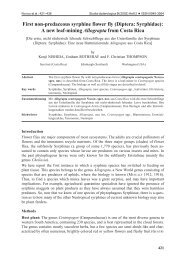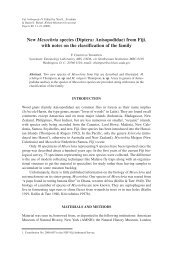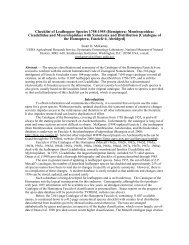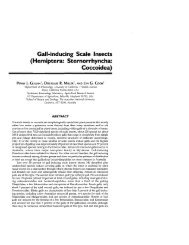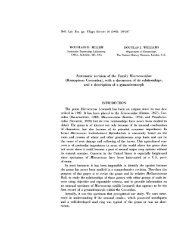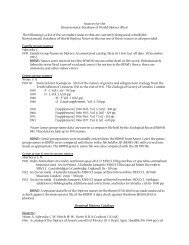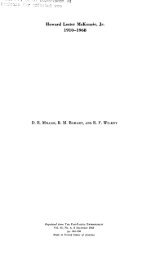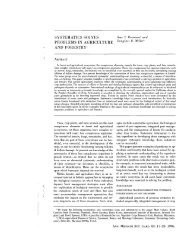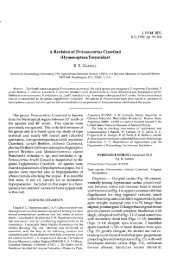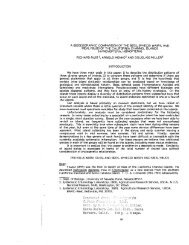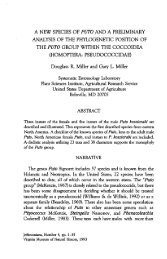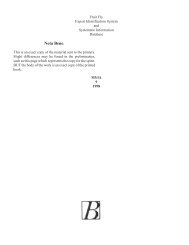Miller1971a - Systematic Entomology Laboratory
Miller1971a - Systematic Entomology Laboratory
Miller1971a - Systematic Entomology Laboratory
Create successful ePaper yourself
Turn your PDF publications into a flip-book with our unique Google optimized e-Paper software.
294 THE PAN-PACIFIC ENTOMOLOGIST [VOL. 47, No.4<br />
from Point Conception to San Diego are the Southern Channel Islands,<br />
and those off the coast near the town of Oxnard are the Northern Channel<br />
Islands. The Northern and Southern Channel Islands are collectively<br />
called the Southern California Islands (Philbrick, 1967).<br />
This paper is primarily concerned with the Northern Channel Islands.<br />
From east to west the four islands comprising this group are: Anacapa,<br />
with three islets, Santa Cruz, Santa Rosa, and San Miguel.<br />
THE CALIFORNIA ISLAND BIOTA<br />
The fauna and flora of the Northern Channel Islands is basically the<br />
same as that of the adjacent mainland; however, there are several notable<br />
exceptions. First, there is a surprisingly large number of endemics considering<br />
that the islands have been separated from the mainland only<br />
since the mid-Pleistocene (Valentine and Lipps, 1967; Axelrod, 1967)<br />
and are presently only 13 miles from the nearest point on the mainland<br />
(Philbrick, 1967). Second, components of the Northern Channel Island<br />
biota show striking affinities with biotas either far to the north or to the<br />
south on the mainland.<br />
Although the percent of endemism on the California Islands is relatively<br />
low, endemic forms are known throughout most of the carefully<br />
studied groups of plants and animals. Among scientists there is disagreement<br />
regarding the source of this endemism. Some believe that the<br />
endemics have evolved on the islands themselves, while others think that<br />
the islands, with their moderate climates, are relictual areas of previously<br />
more widely dispersed species. It is now apparent that the majority of<br />
the endemics are of relictual origin. Axelrod (1967) pointed out that<br />
in the past most of the woody endemics occurred rather extensively on<br />
the mainland. However, there are still a few examples of endemics which<br />
are not easily explained by the refugia concept. The divergent forms of<br />
the tarweed genus Hemizonia (Carlquist, 1965) and the concentration<br />
of dwarf and giant endemics on the islands, appear to be examples of<br />
divergent endemism. It is likely therefore that both sources of endemism<br />
have added to the California insular biota with relictual endemism being<br />
the more predominant type.<br />
Disjunct distribution patterns are also of interest. A number of the<br />
California insular vascular plants are distributed on the mainland in<br />
areas which are not adjacent to the islands where they occur (Raven,<br />
1967). On the Northern Channel Islands these affinities are mainly<br />
with biotas which occur at least 100 miles to the north. A few cases of<br />
affinities to the south are also known.<br />
The presence of northern and southern components within the extant



